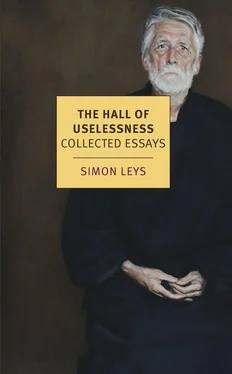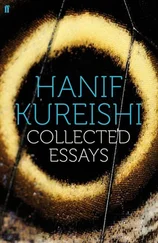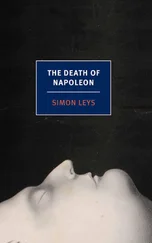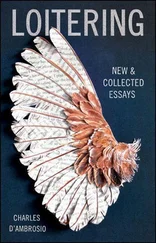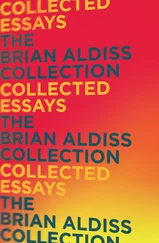A CASE STUDY:
THE “PREFACE TO THE ORCHID PAVILION”
After having dealt with theoretical notions, let us now conclude by examining one exemplary case — a concrete instance that illustrates the actual mechanisms of the relationship between a “spiritual” tradition and its material expression.
My example is taken from calligraphy, which — as I already pointed out — is considered in China as the supreme art. The particular piece I am going to present is itself traditionally considered as the absolute masterpiece of this supreme art. In the entire history of Chinese art there is probably no other individual work that could claim a similar prestige, or could have exerted as wide and lasting an influence. It became a cornerstone in the development of calligraphy. Practically all the major calligraphers of later centuries defined themselves in relation to this particular work.
This arch-famous work is called the Lan ting xu , or Preface to the Orchid Pavilion , by Wang Xizhi (307–365), the greatest calligrapher of all ages.[17]
First, a few words need to be said on the work itself and the circumstances of its creation. In 353, on the occasion of a spring ritual, a group of scholars went on an excursion to a beautiful spot called the Orchid Pavilion. It was a merry and refined gathering, dedicated to the enjoyment of friendship, poetry and wine. At the end of the day, all the poems that had been improvised by the participants were collected, and Wang Xizhi wrote a preface to the collection. The preface itself is a short prose-essay in 320 words. On that day, Wang Xizhi was particularly inspired, and when he calligraphed his preface, he really surpassed himself. Later on, he repeatedly tried to recapture the unique quality of his original creation, and literally made hundreds of attempts to reduplicate his own masterpiece, but never succeeded in equalling the miraculous beauty of the premier jet .
How was this calligraphy handed down in history? Here the plot thickens and even acquires the bizarre and murky twists of a detective story.
After Wang Xizhi’s death, the Orchid Pavilion was kept by his descendants and remained within the family. However, during the first 200 years of its existence, no mention was ever made of it; seemingly, no one had a chance to see it.
Two hundred and fifty years later, it came into the hands of a monk who made copies of it, had these distributed and thus laid the ground for Wang’s subsequent artistic reputation.
Three hundred years later, Wang’s calligraphic style aroused the enthusiasm of Emperor Tang Taizong. Taizong avidly hunted for his calligraphies and gathered the most exhaustive collection of his autographs (2,290 items — all to be eventually scattered). However, the crowning jewel, the Orchid Pavilion , was still missing from this collection. After devious manoeuvres, combining deception and violence, the emperor finally succeeded in securing possession of the masterpiece — at the cost of a human life.[18] Taizong treasured the Orchid Pavilion and ordered copies to be made from it (both tracing copies and free-hand copies); these copies were then carved on stone and rubbings were taken from the stone tablets. Eventually the original stones were lost or destroyed, but new tablets were carved from the original rubbings. As the original rubbings themselves disappeared, new rubbings were taken from later engravings — and with the passing of time, the study of the pedigree of these copies of copies of copies, and the establishment of their genealogical tree, became a specialised discipline of mind-boggling complexity.
Meanwhile, Wang Xizhi’s original manuscript had long ceased to be available for reference. Tang Taizong, who died in 649, had demanded that the Orchid Pavilion be buried with him in his grave at Zhaoling — some 30 kilometres north of what is now Xi’an, where it should still be lying today (if the imperial records told us the truth).
Remarkable paradox: it was only after it finally disappeared forever in the imperial grave that this particular work (which very few calligraphers ever saw in its original form) began to exert its strongest influence, through various indirect and questionable copies. It eventually had its greatest impact at the beginning of the Song period (eleventh century)—700 years after Wang Xizhi’s time. It was then popularised by a calligrapher of genius, Mi Fu, who, under the guise of propounding Wang’s calligraphic style, displayed in fact his own personal creations. The educated public was unable to distinguish the Mi product from the Wang label, as, by this time, practically nothing remained of Wang Xizhi’s original works, with the exception of a few very small, uncertain fragments. From then on, the prestige and influence of the Orchid Pavilion continued to grow steadily. As L. Ledderose neatly summarised it: “It seems somehow uncomfortably symptomatic that it was the lost Orchid Pavilion that was to emerge as the most celebrated work in the history of Chinese calligraphy… What is even more astonishing is that the Orchid Pavilion in addition to being glorified also became a stylistic model: it has been studied by calligraphers for centuries although nobody has ever seen the original!”[19]
Furthermore, there was a final, ironic twist to the story. In 1965, the famous scholar and archaeologist Guo Moruo ignited a bomb that threw the Chinese academic world into turmoil and initiated a heated and still unresolved debate. According to Guo’s findings, not only is the calligraphy of the Orchid Pavilion , as we know it through its Tang and Song copies, from a much later date than Wang Xizhi, but even the text itself could not have been composed by him: in other words, Wang Xizhi neither wrote it nor calligraphed it. The sublime model which inspired the entire development of Chinese calligraphy, the aesthetic and technical cornerstone of this art, may in fact never have existed !
Whether or not this conclusion is accurate (there are some flaws in Guo’s argumentation, but let us leave that aside), it can still provide us with an important clue to the broader issue we have attempted to address: the vital strength, the creativity, the seemingly unlimited capacity for metamorphosis and adaptation which the Chinese tradition displayed for 3,500 years may well derive from the fact that this tradition never let itself be trapped into set forms, static objects and things, where it would have run the risk of paralysis and death .[20]
In a sense, one of the best metaphors for this tradition could be provided by the description of a Chinese garden which a Ming scholar wrote in the sixteenth century. It was a fashion among intellectuals and artists to write records of beautiful gardens, but in the case of our writer, there was a new dimension added to the genre. The garden he described was called the Wuyou Garden — which means “The Garden-that-does-not-exist.” In his essay, the author observed that many famous gardens of the past have entirely disappeared and survive only on paper in literary descriptions. Hence, he wondered why it should be necessary for a garden to have first existed in reality. Why not skip the preliminary stage of actual existence and jump directly into the final state of literary existence which, after all, is the common end of all gardens? What difference is there between a famous garden which exists no more, and this particular garden which never existed at all, since in the end both the former and the latter are known only through the same medium of the written word?[21]
Western visitors in China seem to have been irritated to the point of obsession with what came to be called “Chinese lies” or the “Chinese art of stage-setting and make-believe.” Even intelligent and perceptive observers did not completely escape this trap; in a clever piece written a few years ago by a good scholar,[22] I came across an anecdote which, I think, has a much deeper bearing than the author himself may have realised. A great Buddhist monastery near Nanking was famous for its purity and orthodoxy. The monks were following a rule that conformed strictly to the original tradition of the Indian monasteries: whereas, in other Chinese monasteries, an evening meal is served, in this particular monastery every evening the monks received only a bowl of tea. Foreign scholars who visited the monastery at the beginning of this century much admired the austerity of this custom. These visitors, however, were quite naïve. If they had had the curiosity actually to look into the bowls of the monks, they would have found that what was served under the name of “tea” was in fact a fairly nourishing rice congee, similar in every respect to the food which is being provided at night in all other Chinese monasteries. Only in this particular monastery, out of respect for an ancient tradition, the rice congee was conventionally called “the bowl of tea.”
Читать дальше
